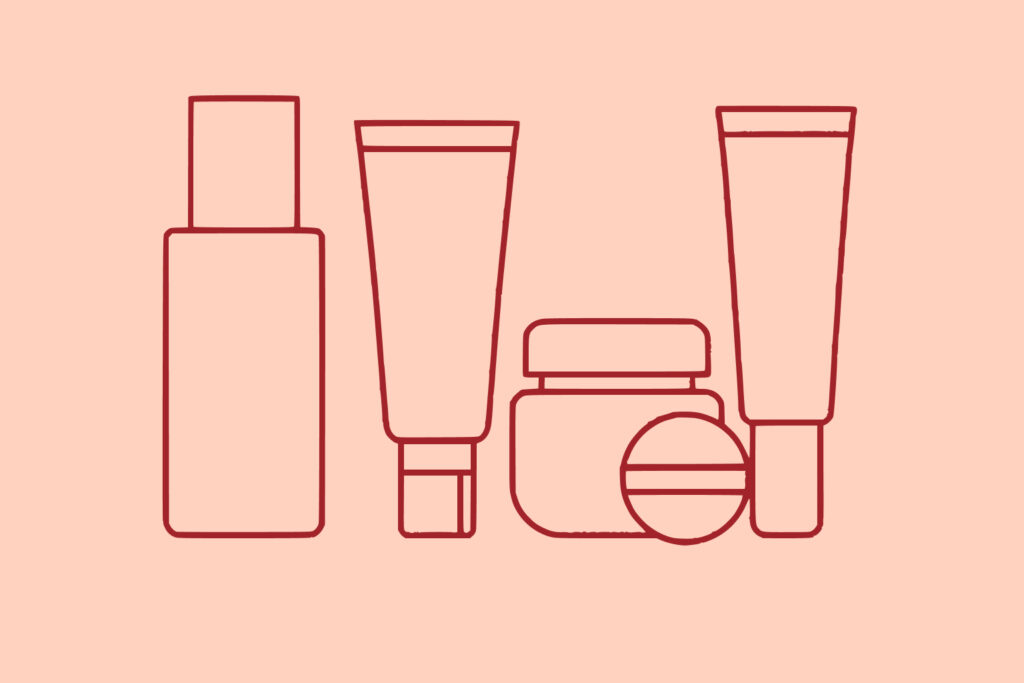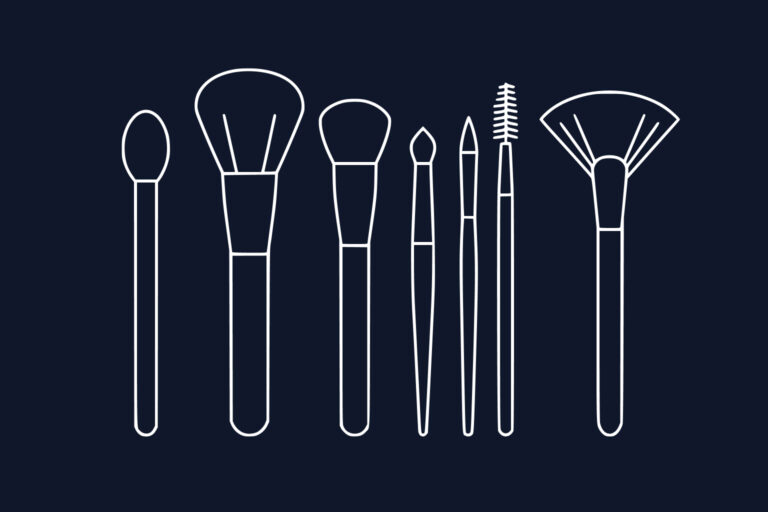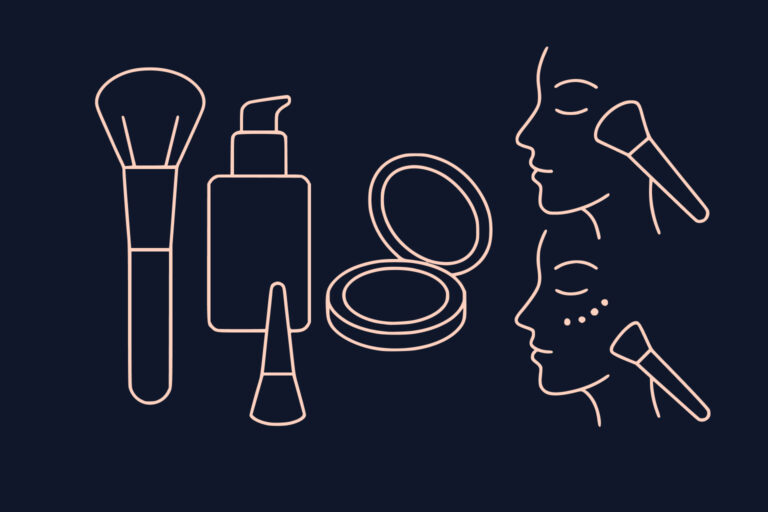Makeup Products Decoded: A Beginner’s Guide to Foundation, Concealer, and Base Products
Published by Professional Makeup Artist London
Walking into a beauty store can feel overwhelming with countless foundation bottles, concealer tubes, and mysterious primers lining the shelves. What’s the difference between BB cream and foundation? When do you use concealer versus colour corrector? This comprehensive guide will demystify base makeup products, helping you understand what each product does, when to use it, and how to choose the right formulations for your skin type and needs.
Understanding Base Makeup: The Foundation of Beauty
Base makeup creates the canvas for all other makeup products, much like preparing a surface before painting. The better your base, the more beautiful and long-lasting your final result will be. Understanding the historical evolution of these products helps us appreciate the sophisticated formulations available today.
The base makeup hierarchy follows a specific application order that ensures each product can perform its intended function without interference from other products. The process begins with skincare, including moisturiser and sunscreen, followed by primer for both face and eyes. Colour corrector is applied if needed, then foundation in liquid, powder, or cream form. Concealer comes next for spot concealing and highlighting, followed by setting powder to lock everything in place, and finally setting spray for the ultimate longevity.
Primers: The Unsung Heroes of Makeup
Primer creates a smooth, even surface for makeup application whilst extending wear time significantly. Think of it as a bridge between skincare and makeup, helping products adhere better and last longer throughout the day.
The primary functions of primer include smoothing texture by filling in pores and fine lines, controlling oil to reduce shine throughout the day, extending wear by helping makeup last six to eight hours longer, improving application by making foundation glide on smoothly, and protecting skin by creating a barrier between skin and makeup.
Silicone-based primers work best for oily skin, large pores, and situations requiring long wear. These primers have a smooth, velvety, slightly slippery texture that provides excellent pore-filling properties, superior oil control, and exceptional longevity. Key ingredients include dimethicone and cyclopentasiloxane, and they should be applied in small amounts, pressed into the skin rather than rubbed.
Water-based primers are ideal for dry skin, sensitive skin, and those seeking a natural finish. These primers have a lightweight texture that absorbs quickly, providing hydrating benefits, comfortable wear, and a natural look. Key ingredients include hyaluronic acid and glycerin, and they should be patted gently into skin and allowed to absorb completely before foundation application.
Specialised primers serve specific purposes and can address particular skin concerns. Colour-correcting primers come in green to neutralise redness from rosacea and blemishes, purple or lavender to counteract yellow tones and brighten the complexion, peach or orange to correct blue and purple tones on deeper skin, and pink to add warmth to pale or ashy skin.
Foundation: Your Skin But Better
Foundation types vary significantly in coverage, finish, and application method, making it important to understand the differences to choose the right formula for your needs.
Liquid foundation offers the most versatility with coverage ranging from sheer to full coverage and finish options including matte, satin, dewy, and natural. This type works best for most skin types and allows for versatile application using brushes, sponges, or fingers. Longevity typically ranges from six to twelve hours depending on the specific formulation and your skin type.
Powder foundation provides light to medium coverage that’s buildable, with a finish ranging from matte to natural. This type works best for oily skin, quick application, and touch-ups throughout the day. Application is typically done with a brush or sponge, and benefits include excellent oil control, easy blending, and travel-friendly packaging.
Cream foundation offers medium to full coverage with a natural to dewy finish. This formulation works best for dry skin, mature skin, and photography where full coverage is needed. Application is typically done with fingers, a damp sponge, or stippling brush, and benefits include hydrating properties, buildable coverage, and long-wearing performance.
Alternative base products offer different benefits for various needs and preferences. Tinted moisturiser provides sheer to light coverage with hydrating benefits, natural finish, and often includes SPF protection. This option works best for good skin days, casual wear, and beginners who want minimal coverage.
BB cream, or Beauty Balm, offers light to medium coverage whilst providing multi-tasking benefits including moisturiser, primer, foundation, and SPF protection in one product. This Korean beauty innovation works best for busy lifestyles, natural looks, and combination skin types.
CC cream, or Colour Correcting cream, provides light to medium coverage with built-in colour correction properties. This product corrects skin tone whilst providing coverage, making it ideal for uneven skin tone, redness, and dullness.
Concealer: Spot Perfection and Strategic Highlighting
Concealer serves multiple purposes beyond simply covering blemishes, making it one of the most versatile products in your makeup arsenal.
Liquid concealer offers light to full coverage and works best for the under-eye area, large areas needing coverage, and situations requiring seamless blending. The finish ranges from natural to dewy, and application is typically done with a brush, sponge, or fingers.
Cream concealer provides medium to full coverage and excels at covering blemishes, scars, tattoos, and spot concealing needs. The finish is usually matte to natural, and application is best done with a small brush or fingertip for precision.
Stick concealer offers medium to full coverage and works perfectly for quick touch-ups, travel situations, and precise application needs. The finish is usually matte, and application involves direct application followed by blending.
Under-eye concealing requires choosing a shade one to two tones lighter than your foundation, applying in an inverted triangle shape under the eye, blending edges carefully with a damp sponge, and setting with translucent powder immediately to prevent creasing.
Strategic highlighting with concealer can enhance facial structure by applying concealer one to two shades lighter than foundation to the bridge of the nose to create the illusion of a straighter, more defined nose, the centre of the forehead to add dimension and lift, the chin to balance facial proportions, and the cupid’s bow to enhance lip shape and definition.
Setting Products: Locking in Your Look
Setting products ensure your carefully applied base makeup stays fresh and beautiful throughout the day, potentially extending wear time by six to eight hours.
Setting powder, typically translucent, serves to absorb oil, prevent creasing, and extend wear time. Application should focus on the T-zone and under-eye area where oil and creasing are most likely to occur. Types include loose powder, which provides more coverage, and pressed powder, which offers convenience for touch-ups.
Setting spray serves as the final lock for your makeup, with different types serving different purposes. Mattifying sprays control oil and reduce shine, dewy sprays add radiance and hydration, long-wearing sprays extend makeup longevity, and refreshing sprays revive makeup throughout the day.
Proper application technique involves holding the bottle six to eight inches from your face, spraying in an “X” and “T” pattern to ensure even coverage, allowing the spray to air dry completely, and avoiding touching your face whilst the spray dries.
Skin Type Considerations
Different skin types require different product selections and application techniques to achieve optimal results.
For oily skin, the best choices include mattifying, silicone-based primers, oil-free foundation with matte finish and long-wearing properties, matte finish concealer with oil-absorbing properties, and translucent powder with mattifying spray for setting. Look for ingredients like salicylic acid for oil control, niacinamide for pore minimising, silica for oil absorption, and zinc oxide for mattifying effects.
For dry skin, optimal choices include hydrating, water or oil-based primers, foundation with dewy finish and hydrating ingredients, creamy, moisturising concealer formulas, and light powder with dewy setting spray. Beneficial ingredients include hyaluronic acid for hydration, glycerin for moisture retention, squalane for nourishing properties, and ceramides for barrier repair.
Combination skin requires a targeted approach using mattifying primer and oil-control foundation in the T-zone, hydrating primer and moisturising products in dry areas, different products applied to different areas as needed, and powder only where necessary for oil control.
Sensitive skin considerations include choosing products with safe ingredients like zinc oxide for gentle, soothing properties, titanium dioxide for non-irritating coverage, niacinamide for calming effects, and allantoin for healing properties.
Conclusion
Understanding base makeup products transforms your beauty routine from guesswork to informed artistry. Each product serves a specific purpose in creating a flawless canvas for the rest of your makeup. By choosing the right formulations for your skin type, understanding proper application techniques, and ensuring product compatibility, you can achieve professional-quality results at home.
Remember that the best base makeup is the one that enhances your natural skin whilst feeling comfortable throughout the day. Start with the basics, experiment with different formulations, and gradually build a collection that serves your lifestyle and beauty goals.
Whether you’re exploring the rich history of cosmetics or mastering fundamental application techniques, understanding your products is the foundation of beautiful makeup. Invest time in learning about formulations, practise application techniques, and don’t be afraid to ask for professional guidance when building your collection.




